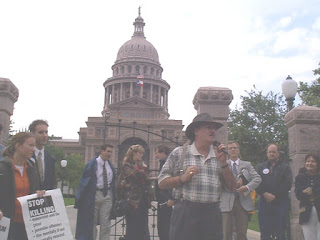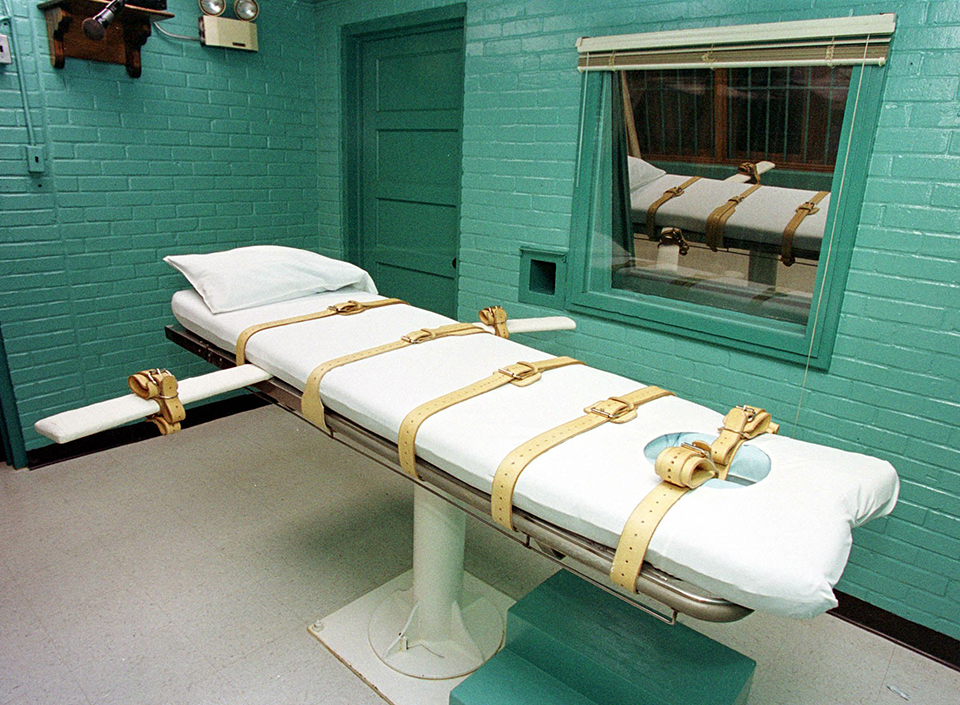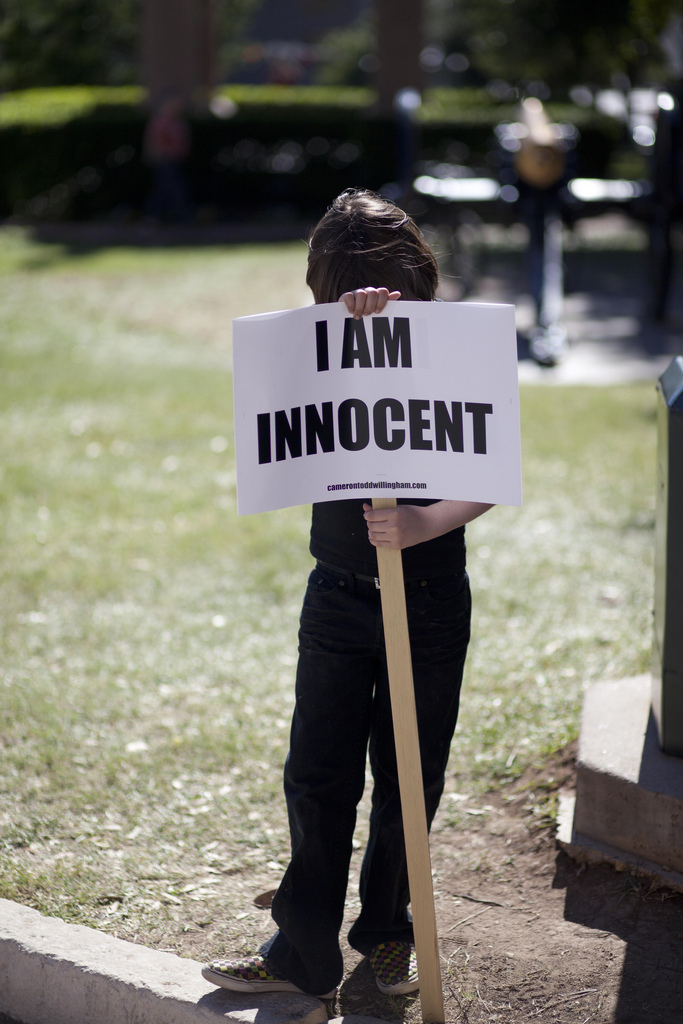Statement by Charles Terrell Supporting HB 1641 for a Moratorium on Executions and Study Commission
Charles Terrell,
Former Chairman of the Texas Criminal Justice Department
Former Chairman of the Texas Criminal Justice Task Force
Chairman of Safer Dallas Better Dallas.
Statement by Charles Terrell Supporting HB 1641 for a moratorium on executions
House Committe Set to Hear Testimony Tuesday on Bills Arising from Case of Kenneth Foster
 |
| Kenneth Foster Sr in 2007 after hearing the news that his son Kenneth Foster Jr’s death sentence was just commuted to life by Governor Rick Perry |
Today, Tuesday March 29, the Texas House Committee on Criminal Jurisprudence will hear testimony on two bills that would require separate trials in death penalty cases. HB 2200 was filed by State Rep Borris Miles to require separate trials. HB 2511 was filed by State Rep Harold Dutton. In addition to the separate trials requirement, Dutton’s HB 2511 also contains a provision prohibiting death sentences in Law of Parties cases.
The issue of separate trials arose after Governor Rick Perry commuted the death sentence of Kenneth Foster, Jr in 2007. At the time, Perry cited the fact that Foster had been tried together with his co-defendant as a reason for his decision to commute the death sentence. Rep Dutton has also filed HB 855 that would prohibit death sentences in Law of Parties cases. It will also be heard on Tuesday.
Below is the statement Perry issued on the day of the commutation in 2007:
Governor Rick Perry Commutes Death Sentence
Updated Start Time for Tuesday’s Hearing on Death Penalty Bills in House Committee on Criminal Jurisprudence
The likely start time for the hearing on the death penalty bills on Tuesday March 29 in the Texas House Committee on Criminal Jurisprudence is 1:30 – 2 PM. The full House does not even start meeting until noon and the committee does not start until “upon adjournment of the House”, so 1:30 or 2 is the probable start time for the hearing.
The hearing will likely go all afternoon and maybe into the early evening. We do not know in which order the bills will be taken up. If you absolutely can not get off work till 5, then come by after work and you will probably still be able to sign a support form in favor of the bills. But try to get there earlier so we can fill the meeting room with lots of people.
The House Committee on Criminal Jurisprudence has set a hearing for Tuesday March 29, 2011 on several death penalty related bills, including a moratorium on executions (HB 1641), abolition of the death penalty (HB 852 and HB 819), and prohibiting death sentences in Law of Parties cases (HB 855 and HB 2511).
Please make plans to attend the meeting and sign in to show your support for bills that would stop executions in Texas. The meeting will be held in room 120 of the John H. Reagan Building at 105 W. 15th Street in Austin in the capitol complex (map). We have created a Facebook event page for the committee hearing. Post the event page to your Facebook profile and invite your friends to the meeting, so we get more people to attend the meeting.
Call the members of the House Criminal Jurisprudence Committee and urge them to vote in favor of a moratorium on executions, as well as the other bills that you favor.
Chair: Pete Gallego (Democrat, District 74 – Alpine) (512) 463-0566
Email form http://tinyurl.com/petegallego
Vice Chair: Will Hartnett (Republican, District 114 – Dallas) (512) 463-0576
Email form http://tinyurl.com/willhartnett
Jose Aliseda (Republican, District 35 – Beeville) (512) 463-0645
Email form http://tinyurl.com/josealiseda
Cindy Burkett (Republican, District101 – Mesquite) (512) 463-0464
Email form http://tinyurl.com/cindyburkett
Stefani Carter (Republican,District 102 – Dallas) (512) 463-0454
Email form http://tinyurl.com/stefanicarter
Wayne Christian (Republican,District 9 – Center) (512) 463-0556
Email form http://tinyurl.com/waynechristian
Yvonne Davis (Democrat, District 111 – Dallas) (512) 463-0598
Email form http://tinyurl.com/yvonnedavis
Eddie Rodriguez (Democrat, District 51 – Austin) (512) 463-0674
Email form http://tinyurl.com/repeddierodriguez
Bill Zedler (Republican,District 96 – Arlington) (512) 463-0374
Email form http://tinyurl.com/billzedler
HOUSE OF REPRESENTATIVES
NOTICE OF PUBLIC HEARING
COMMITTEE: Criminal Jurisprudence
TIME and DATE: Upon final adjourn./recess
Tuesday, March 29, 2011
PLACE: JHR 120
CHAIR: Rep. Pete Gallego
Randall Dale Adams: His Story Should Move Legislators to Vote for a Moratorium on Executions
 |
| Randall Dale Adams in 2001 Calling for a Moratorium on Executions in Texas |
In 2001, Randall Dale Adams testified to a committees in the Texas House and Senate and told his story of how he was wrongfully convicted and sentenced to Texas death row. His testimony helped convince the committees to vote in favor of a moratorium on executions. Later in 2001, 53 members of the Texas House voted for a moratorium on the floor of the Texas House in a bill filed by Rep Harold Dutton.
This Tuesday, the House Committee on Criminal Jurisprudence will again consider a bill for a moratorium on executions (Facebook event page). The committee members should consider the case of Randall Adams as they consider whether they should vote for a moratorium.
Watch the beginning of “The Thin Blue Line” the documentary by Errol Morris that led to the exoneration of Randall Dale Adams, who at the time the film came out was still on death row in Texas.
Watch Errol Morris – The Thin Blue Line in Educational & How-To | View More Free Videos Online at Veoh.com
Listen to some music by Phillip Glass composed for the film “The Thin Blue Line”.
- Texas Moratorium Network (TMN) is a non-profit organization with the primary goal of mobilizing statewide support for a moratorium on executions in Texas. Significant death penalty reform in Texas, including a moratorium on executions, is a viable goal if the public is educated on the death penalty system and is encouraged to contact their elected representatives to urge passage of moratorium legislation.
We hope that you will join us in this fight for fairness and social justice.Please join our email list and become one of the more than 20,000 people receiving information through our network.











